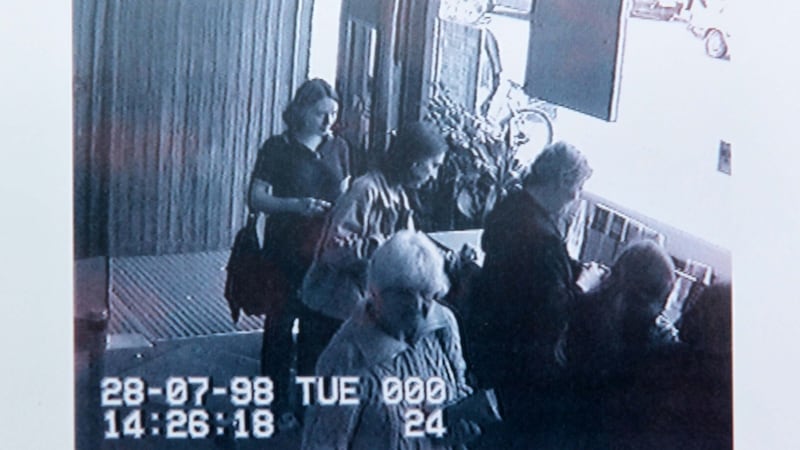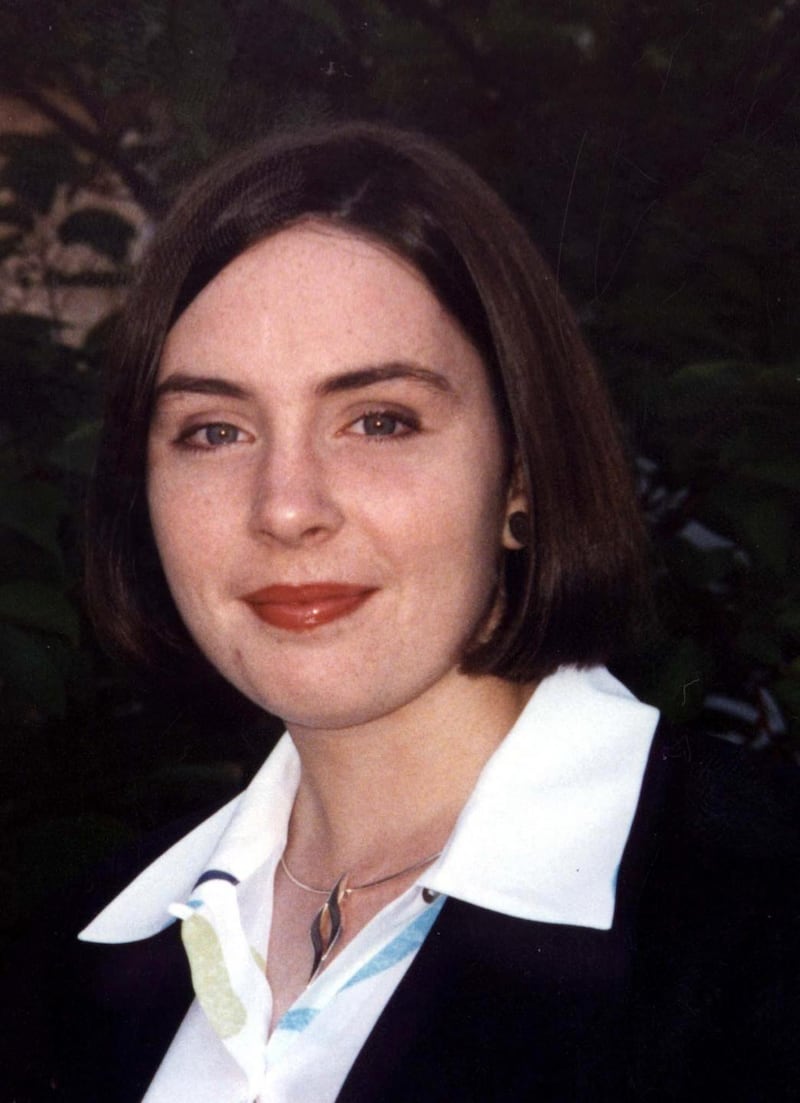Some time ago a man came forward and told gardaí the criminal now regarded as the chief suspect for the 1998 murder of Deirdre Jacob had made a drunken confession to him.
That confession, the witness said, suggested the suspect snatched the 18-year-old student teacher from the roadside in a sexually motivated attack.
According to the account, the suspect had a map on the passenger seat of his vehicle as he drove along a road close to Deirdre's home in Newbridge, Co Kildare, on July 28th, 1998.
When he saw Deirdre walking along the roadside, returning from a bank in Newbridge to her home about 1.5km outside the village, he asked her for directions through the open passenger side window.
When Deirdre leaned into the vehicle via the open window to point out a location on the map, the suspect dragged her by the hair through the window and drove off.
However, according to the witness, the suspect claimed the trainee teacher fought so hard and made so much noise the suspect killed her immediately for fear of being caught as he abducted her.
New intelligence
Gardaí are now certain Kildare teenager Deirdre Jacob was murdered when she vanished 20 years ago. They confirmed this week they had received new information to that effect.
The new intelligence came to light only in recent weeks. It did not come from the same person, himself a convicted criminal, who previously claimed the suspect had made a confession to him when drunk.
As a result of the new information, gardaí have upgraded the missing persons inquiry to a murder investigation.
But what happens now? Is there really any hope of finding Deirdre Jacob’s body? Might they even catch her killer?
Alan Bailey is optimistic on both counts. Now retired from the Garda, he was in the force 39 years. And most of that time was spent on Operation Trace, where he was national co-ordinator for 13 years.
Operation Trace was established almost 20 years ago to investigate possible links between the disappearances of a number of women who vanished in Leinster in the 1990s. No link was ever found.
After Operation Trace, Bailey was the sergeant in charge of the Garda’s “cold case” unit for five years – a role he maintained until his retirement.
Asked how difficult it is to crack a cold case, Bailey replies: “Not difficult,” before qualifying his response. “Obviously there are different types of cold case investigations. In some cases you can have DNA evidence,” he says – samples stored from the time of an original investigation.

“In some of those cases, a new test that wasn’t available 20 years ago may give you a match in a day.
“There was a time, not so long ago, when you needed an awful lot of blood in a sample to test it. But that day is gone now.
“They’re looking at dandruff now at crime scenes; it’s gone that finite. But obviously you need samples – of blood or semen and so on – to test. And not every cold case has those samples.”
No crime scene
In the case of Deirdre Jacob – and the other Operation Trace vanished women – there are no remains, no crime scenes and no physical evidence to speak of.
In the absence of a DNA match, Bailey says working the alibi evidence is another key focus when approaching old cases.
“Does a suspect’s alibi from the time still stand up? Does it stand the test of time?” he asks.
“Cold cases are difficult, of course. But the passage of time can affect people’s loyalties.” A loving partner who supplied an alibi 10 or 20 years ago may no longer be loving or a partner.
The frightened wife, son or daughter who feared a dominant husband or father then – or needed him at home rather than in jail because he was the only breadwinner – may not fear or need him now.
While Bailey does not comment specifically on the Deirdre Jacob case, other sources point out that the suspect for her murder has committed very serious crimes since 1998. As a result, his relationships with family and old friends and colleagues had broken down since Deirdre Jacob vanished.
That may make people who were around him in 1998 much more inclined to speak now.
Some Garda sources said it would not be impossible to put together a prosecution in the courts based on circumstantial evidence such as the information from those witnesses who have already come forward; with the new intelligence in recent weeks and the account of the drunken confession, which was made to gardaí several years ago.
Alan Bailey says Irish courts now consider circumstantial evidence more seriously than they used to. But he believes that for a substantive breakthrough in a “missing assumed murdered” case, a victim’s remains are needed.
Need a body
“You need a body for a trial,” he says, citing the case of disappeared-presumed-murdered woman Sandra Collins (28) in Co Mayo. She vanished in 2000 in Killala. Like Deirdre Jacob and other vanished women, her body was never found. Some 14 years later a married man she had been in a relationship with at the time was put on trial for murder.
But the case was halted before running its course. The trial judge was not satisfied to allow the jury deliberate and come to a verdict. He instructed the jury to acquit the man because there was insufficient evidence.
Those familiar with the case said the absence of Sandra Collins’s remains represented a glaring lack of evidence, even in proving she was both dead and a victim of foul play.
The same problem has dogged the inquiries into various Operation Trace women: Fiona Sinnott, Eva Brennan, Josephine Dullard, Ciara Breen, Fiona Pender, Deirdre Jacob and Annie McCarrick.

There are suspects now for four of these cases – Fiona Sinnott, Fiona Pender, Ciara Breen and Deirdre Jacob. But without their remains, little progress has been made. The cases, apart now from Deirdre Jacob’s, are not even classified as murders.
Several Garda sources said the upgrading of Deirdre Jacob’s case was a boost for the investigation, adding that the publicity of the past week may yield more information.
One Garda source experienced in dealing with complex witness dynamics says the Deirdre Jacob investigation is now dependent on the right bedside manner being taken to those who made up the suspect’s family and social circle in 1998.
“You have to have [Garda] family liaison officers who can work with those people, sit and talk to them and listen to them,” he says. “They have to be reassured that if they give information now nobody will blame them for waiting so long.
“They have to be made to understand the pain the Jacob family is in and the risk the suspect still poses to women. Gardaí now have to sell that package to the people who were around the suspect. They have to win their confidence and then convince them to talk. That’s the job now.”
Stomping ground
Another Garda source said the people closest to the suspect may be able to point out his “stomping ground”, which might yield a body.
“They may have dumped or buried a body in a place they knew well and were comfortable in,” says one source. “Did any location become a favoured spot for walking or just hanging around for the suspect?
“It is not unheard of for the location of a crime or a body to become very significant for a killer. And that includes repeatedly going back there. Is there any place these [possible witnesses] can direct gardaí to in relation to the Deirdre Jacob suspect?”
If intelligence identified lands for searching, a graduated approached would be taken. Gardaí wouldn’t begin digging immediately. Indeed, excavation would be carried out based only on information regarded as reliable and very specific.
If a general piece of land – a wooded area, for example – were identified as a place of interest, gardaí would conduct a walkthrough; a team of officers walking the land in a co-ordinated way in a bid to identify anything unusual.
This could include discarded footwear, the remains of clothing, accessories or subsidence in the earth, for example. It could also include human remains that may have been dug up by animals or from a body dumped on the surface of the earth having been scattered over a distance by scavenging animals over time.
If remains were found after many, many years, there is still the possibility of getting forensics from it
In areas that are not wooded, scanning equipment can be used to detect human remains in the ground. This technology is accurate and can detect even very small sections of partial remains or personal effects.
If no area is identified for further exploration after a walkthrough or scanning, cadaver dogs can be brought in.
Teams of gardaí will walk the land and spike it; pushing sharp sticks into the earth. If remains are buried, the “spiking” is intended to release gases from, or the scent of, decomposition for the dogs to pick up.
“If remains were found after many, many years, there is still the possibility of getting forensics from it,” said one source. “But even if you didn’t get any ‘assets’ like that from it, it would still be a huge breakthrough. You’d have some level of closure for a family.
“If you got it to court a jury may also think ‘if the gardaí found the body, they must be on the right track here’.
Garda sources say the investigating team, based at Naas Garda station, already has enough new information to arrest the suspect for interview.
However, a complicating factor is that the suspect is currently abroad. And he could be extradited only to be charged. Gardaí cannot extradite a person simply to question them about their alleged role in a crime.
It means the Garda inquiry would need to make very significant progress and reach a point where the DPP had approved criminal charges before the suspect’s extradition to Ireland could be sought.
In the meantime, the suspect is at liberty and free to live openly abroad without fear of arrest in relation to Deirdre Jacob. He is also under no obligation to ever make himself available for interview by gardaí.
“There is a lot of work to be done here still,” the source said of the now-moving Deirdre Jacob case. “The gardaí and the family also need a bit of luck. But with this case, you’d just never know. This is not impossible.”
















